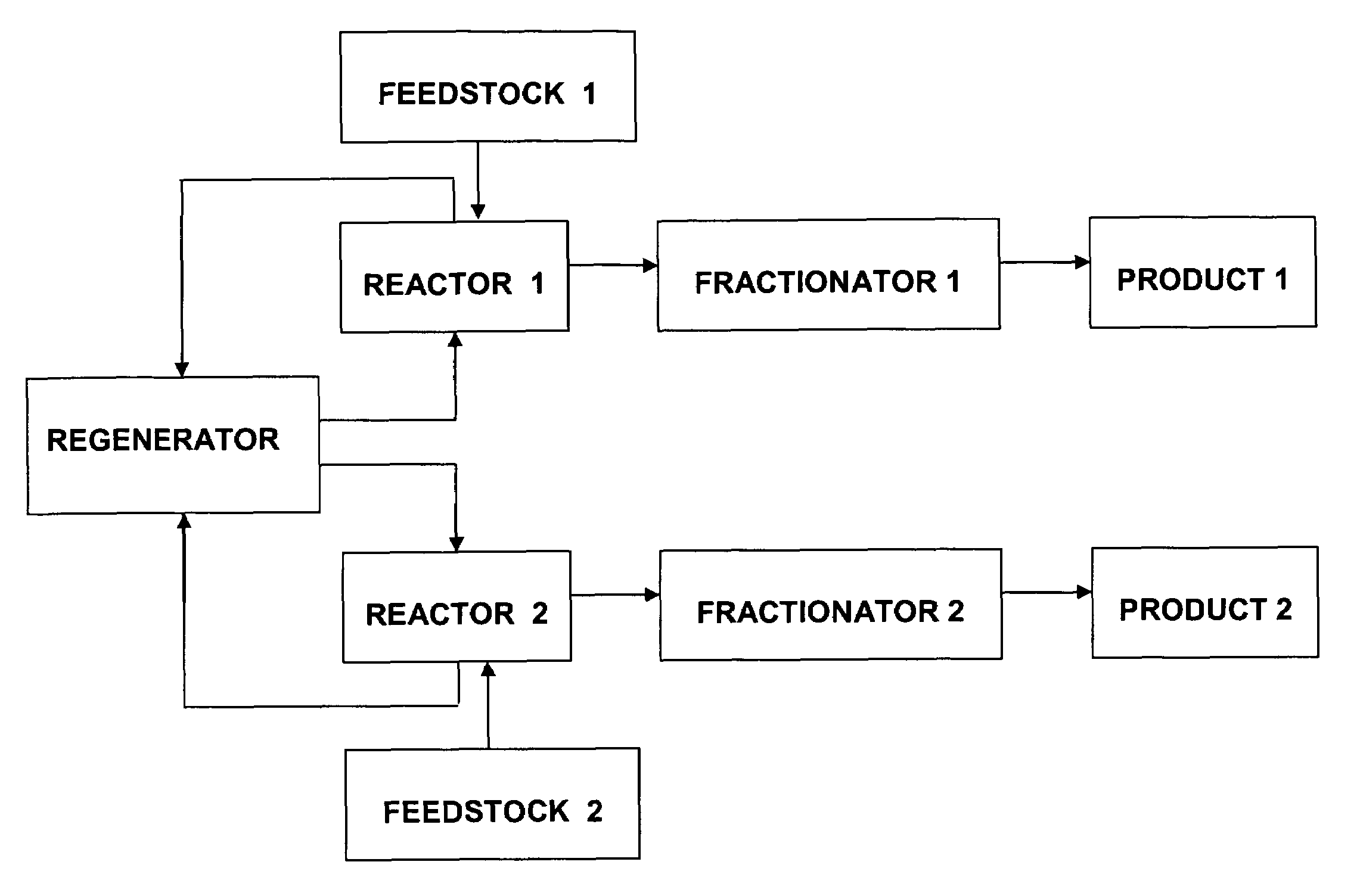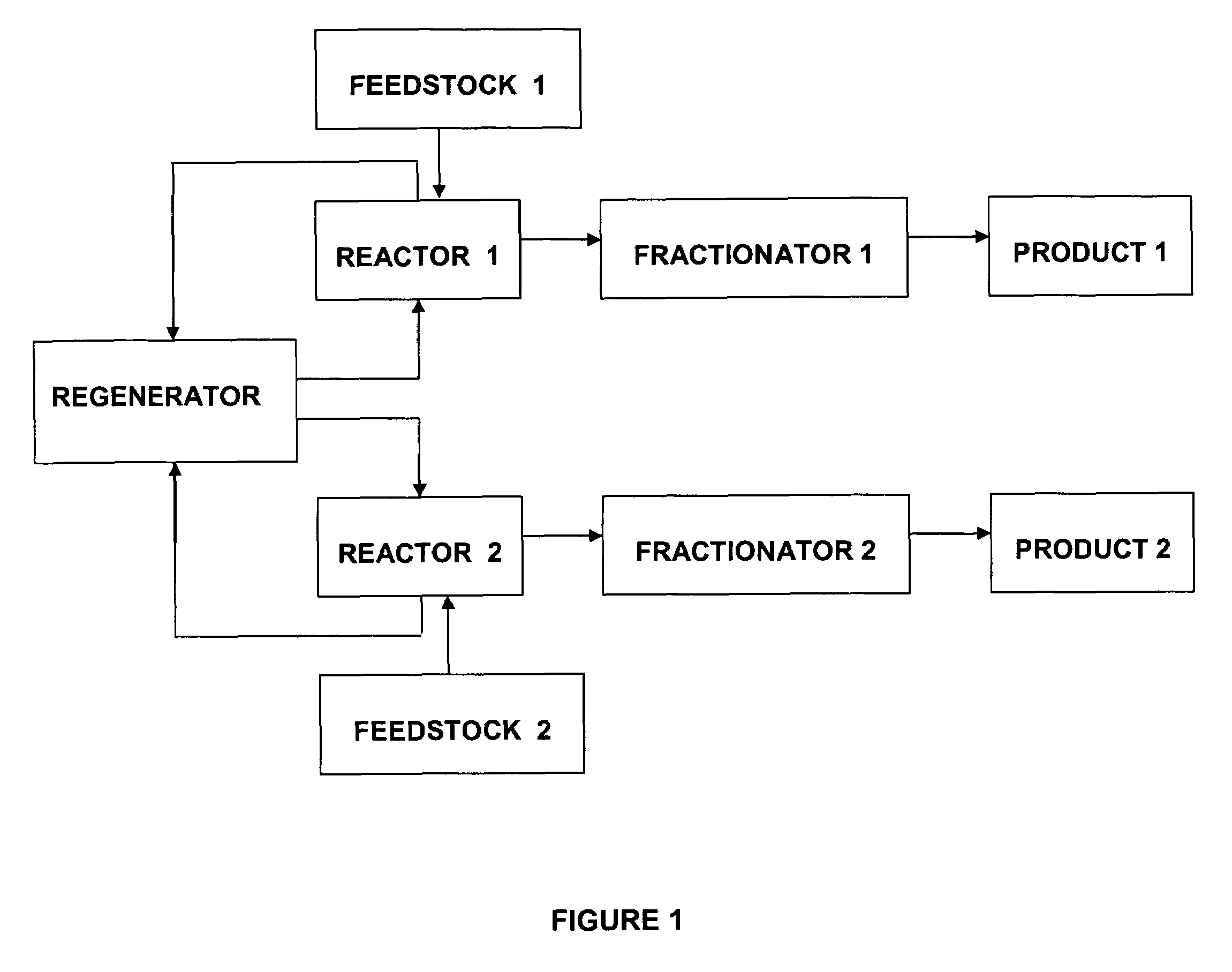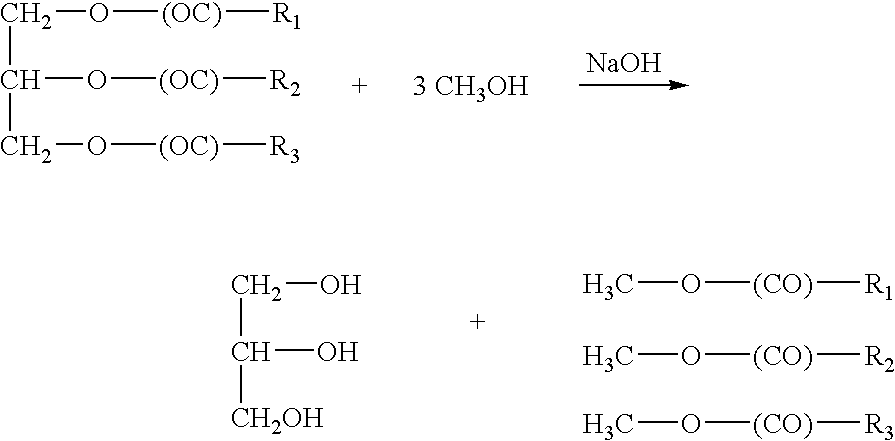Catalytic cracking process for the production of diesel from vegetable oils
a technology of vegetable oil and catalytic cracking, which is applied in the field of fluid catalytic cracking process, can solve the problems of affecting the performance of the engine,
- Summary
- Abstract
- Description
- Claims
- Application Information
AI Technical Summary
Benefits of technology
Problems solved by technology
Method used
Image
Examples
example
[0022]The radicals R1, R2 e R3 in the triglyceride formula below (castor oil) are linear side chains (with no aromatic rings attached to), which contain a hydroxyl in the twelfth carbon atom and a double bond in the ninth.
[0023]
[0024]One evaluated the castor oil cracking in pilot scale. One chose an equilibrium catalyst with reduced rare earth content in order to avoid hydrogen transfer reactions during the experiments. One changed the catalyst to oil ratio by varying the reaction temperature from 300° C. up to 400° C. One held the rectifier at 500° C. while one operated the separation tank at the same temperature of the riser. One accomplished a previous evaluation as reference by operating the unit without vapor, being nitrogen used in the dispersion and rectification. Therefore, one ascribed the yielded water of the oil stream as been utterly derived from the castor oil. In order to correct mass balances one used the mean value obtained, 11%, discounting the yielded water from th...
PUM
| Property | Measurement | Unit |
|---|---|---|
| temperature | aaaaa | aaaaa |
| temperature | aaaaa | aaaaa |
| temperature | aaaaa | aaaaa |
Abstract
Description
Claims
Application Information
 Login to View More
Login to View More - R&D
- Intellectual Property
- Life Sciences
- Materials
- Tech Scout
- Unparalleled Data Quality
- Higher Quality Content
- 60% Fewer Hallucinations
Browse by: Latest US Patents, China's latest patents, Technical Efficacy Thesaurus, Application Domain, Technology Topic, Popular Technical Reports.
© 2025 PatSnap. All rights reserved.Legal|Privacy policy|Modern Slavery Act Transparency Statement|Sitemap|About US| Contact US: help@patsnap.com



